Dutch and Belgian Heroism—WWII Escape Lines for Allied Fliers (Part II)
by Bruce Bolinger
Part I, in issue 95, described Service EVA, a WWII Resistance organization in Brussels specializing in housing escaping Allied fliers who had been shot down, pending their being turned over to other escape lines which spirited them out of Nazi-occupied Europe. A Dutch escape line, organized by Karst Smit, a Dutch mounted policeman, would move them across the Dutch-Belgian border and on to Brussels where they were delivered to the reception point, the apartment of Charlotte Ambach and her mother Elise Chabot in the suburb of Ixelles.
One day in 1942 Charlotte Ambach returned home from her secretarial job to find a visitor at the apartment she and her mother shared. He was Eduard Cleeren, a Belgian Army officer, who had escaped to England after the Belgian surrender. There he had been trained and then parachuted back into Belgium with orders to set up a Resistance organization. Cleeren asked if he could use their apartment as a safe house and as a place to hold organizational meetings, to which the women agreed.
When Charlotte was offered a job as a stenographer by the Todt Organization, the German company specializing in construction of military facilities and rebuilding of roads, bridges, and rail lines in the occupied countries, Cleeren advised her to take it. Henceforth, when typing memos, Charlotte would make an extra carbon copy for Cleeren, providing him with valuable intelligence.
Eduard Cleeren’s work put him at great risk. On one occasion he was almost caught on a train carrying a radio transmitter, but he passed it off as an EKG device intended for medical purposes. He told Charlotte and Elise that if anything happened to him, they should contact Ernest Van Moorleghem, assistant police commissioner for Ixelles. When the Germans finally captured Eduard, Charlotte waited a few days and then contacted Van Moorleghem. Ernest was already deeply involved in the Resistance. He was the police officer who, on behalf of Karst Smit, interrogated Capt. Kopp, the German agent who was pretending to be a Canadian flier (see Part I).
Even under the most innocent circumstances, people in Belgium could be swept up in raids by the German police. Once, while at a bar in Brussels, Charlotte was taken in for questioning just because she was present. Shoved into the back seat of the German police car with two other prisoners, and while the attention of the policemen was elsewhere, she slipped a small piece of paper having to do with troop movements into her mouth and swallowed it. Another document, a small photograph of a German Air Force emplacement, she crumpled between her fingers and then dropped onto the street when they got out of the car. With no justification for being held, she was released.
Charlotte Ambach and Ernest Van Moorleghem fell deeply in love. By 1943, she had turned 21 and he was 29. Charlotte said of Ernest, “he was very bright, intelligent, dedicated, and loyal.” Karst Smit, the Dutch mounted policeman who worked with Ernest, remembers him as a handsome young man. Records in the National Archives reveal that he assisted 55 Allied fliers to escape, this in addition to his other Resistance work.
Among the first escapees helped by Charlotte and Elise were Dutch political opponents of the Nazis, including H.P. Linthorst-Homan, who after the war became governor of the province of Friesland. A French chef, who was an escaped prisoner of war, showed his appreciation by cooking the two women a dinner at their apartment. By July 1943, Allied fliers were arriving as well. Typically, Alphonse Escrinier, member of the “Comite de Direction” of Service EVA, (see Part I) would call to let Charlotte know that there was a flier to be picked up, often at the North Station in Brussels. On other occasions the flier’s guide might be the student, Willem Schmidt, of the Dutch escape line; the head of the escape line, Karst Smit; or Eugene van der Heijden (see Part I), and the guide would deliver the flier directly to their apartment. When the guide arrived with his charge, it was an opportunity for him to pick up messages, have tea with the two women, and talk for a half-hour, while the flier had some refreshments. The comings and goings of so many young men might have attracted the neighbors’ attention but Charlotte and her sister Madelon Frisque, who lived on the floor above, were both attractive young women and just passed them off as friends.
Usually the flier would be guided by Ernest Van Moorleghem from the Ambach-Chabot apartment across central Brussels to the fishmarket of Prosper Spilliaert, at 167 Avenue de la Reine in the Brussels commune of Schaerbeek, for processing. In all the time that Charlotte and Elise were helping the fliers, Charlotte never knew where Ernest took the men. Nor did she know any of the leaders of Service EVA. Escrinier she never met, and it was only his voice on the phone that she could recognize. This compartmentalization of functions within Service EVA prevented a worse disaster from occurring when the Germans first penetrated the organization in November 1943.16
Disaster Strikes
The last flier assisted by the Karst Smit-Ambach-Chabot-Van Moorleghem combination was Tom Applewhite, an American bombardier on a B-17. Shot down on Nov. 11, 1943, he spent two nights hiding with a Dutch farm family in the village of Well on the north side of the Maas river not far from the city of ‘s-Hertogenbosch. By Nov. 13 escape arrangements had been worked out and he was turned over to Karst Smit’s escape line. On Nov. 14 Eugene van der Heijden took him from the shelter in the woods on the Dutch-Belgian border to the Ambach-Chabot apartment in Ixelles. Ernest Van Moorleghem then guided him to Spilliaert’s fishmarket. Applewhite was to be the last man through this combination of Resistance links.
The searching Germans quickly captured most of the other members of Applewhite’s crew. One man, Nello Malavasi, evaded capture up to Nov. 15, the day after Tom Applewhite had reached the fishmarket. While waiting with Willem Schmidt, his guide, at Turnhout for a train to Antwerp, they had to take shelter from a heavy rainstorm. The only place to get out of the downpour was a restaurant full of German soldiers. Malavasi was of Italian descent and his looks drew the unwanted attention of the Germans, who soon realized he was an American flier. Both men were arrested. When Charlotte Ambach arrived at the North Station to pick up Malavasi from Schmidt, she waved hello to Willem as the two men came down the platform, but the man with Schmidt was not Malavasi but a Luftwaffe policeman who shoved a pistol in her face and said, “Hände hoch!”
Next came the arrests of Charlotte’s mother and sister. It was only the fact that Charlotte was late in returning home with the flier that tipped Elise that something was wrong, giving her enough time to hide incriminating papers on a deep window sill high up in the back wall of their tiny hallway toilet. From the living room window of their third floor apartment she could see the German police as they piled out of their cars and raced up the winding staircase to arrest her. By Nov. 16, the German net had widened to engulf several of Karst Smit’s operatives and Ernest Van Moorleghem.
On Nov. 20, Eugene van der Heijden saw German police on their way to arrest Karst Smit and called Karst’s police barracks to warn him to go into hiding. Eugene knew it was too dangerous to remain at his home in Hilvarenbeek any longer, and went into hiding as well. By January, two of Eugene’s brothers and his father were arrested, never to return from the concentration camps. Two of the students at the shelter in the woods on the border were captured and died at German hands; another was shot during a raid in 1944. After the war the van der Heijden family was honored by Yad Vashem. Eugene received the American Medal of Freedom.
Charlotte Ambach, Elise Chabot, and Ernest Van Moorleghem were tried by a German military tribunal, and on June 2, 1944 found guilty and sentenced to death. Ernest Van Moorleghem and the guide Willem Schmidt were executed. Karst Smit avoided arrest by hiding in a Protestant church in The Hague. The church was only used for Sunday services; the rest of the week Karst would ride his bicycle around inside the church to keep fit. Allied authorities next sent Karst to Paris to help set up another escape line, but he was betrayed by another member of the Dutch resistance, Christian Lindemanns, known as “King Kong” for his tremendous size. Lindemanns’ pregnant wife and brother had been arrested by the Germans. In a desperate move to save them, Lindemanns offered the Germans an entire escape line, including Karst Smit, in exchange.
Smit said that, had it not been for the Normandy invasion in June 1944, which distracted the Germans, he would have been executed. Instead, sent to a concentration camp, he survived, finally escaping from his SS guards during the Russian advance. His parents had been notified that both of their sons had been killed in the war. When the war ended, Karst came home.
Although the Nazi government had revoked the German citizenship of Charlotte and Elise, they were still treated as Germans for purpose of punishment and were imprisoned in Germany pending their execution. From their prison cell in Waldheim, they had been hearing the sound of artillery since April 13, 1945. On May 6, Charlotte heard the doors to the cells being opened–by a Russian soldier who had obtained the keys. When he came to their cell, all she saw was his sleeve because he was instantly mobbed by the women wanting to embrace him. Charlotte’s mother had lost 80 lbs. since their arrest. Before leaving the prison, some of the inmates examined the prison files relating to them. Charlotte learned that she, Elise, and the others in her group were scheduled to have been executed May 22. After the war, Charlotte and Elise were honored by the governments of Belgium, the Netherlands, the UK, and the USA. Both received Belgian citizenship from a grateful Belgian government. Charlotte was made a Knight in the Order of Leopold II.
Before his arrest, Ernest Van Moorleghem had given a packet of love letters for Charlotte to Karst Smit for safekeeping. Karst hid them under a plank in the floor of his room in the police barracks at Baarle-Nassau. After the war, Karst returned to the barracks and retrieved the letters. Not knowing if Charlotte would be able to handle it emotionally, he waited a year before giving them to her. Charlotte never married. She died April 9, 2003 at her home in Green Valley, Arizona. A picture of Ernest was still on a table in her living room, a ribbon in the Belgian national colors of red, gold, and black across the picture’s lower left corner.17
The Bombing of the Fishmarket
With the wave of arrests, the fishmarket’s role as a processing center for arriving fliers ended, other locations being used from then on. But Prosper Spilliaert, his wife, and stepson continued to receive fliers and guide them to safe houses until well into January 1944. On May 9, 1944, the US Army Air Corps conducted a bombing raid of the marshalling yards in Brussels. The risk of stray bombs made it too dangerous for the Belgians to remain out in the open. Hearing the air raid sirens, Spilliaert began to lower the heavy roll-down shutter on the front of the fishmarket. One of the Service EVA members, Blanche Page, came running up seeking shelter. With the metal shutter almost all the way down, she threw herself on the ground and rolled under it into the fishmarket as Spilliaert finished lowering it. Usually Spilliaert didn’t bother going down into the basement during air raids but Page insisted, and they both hurried down below street level. It was then that an American bomb hit just behind the fishmarket, demolishing the entire building and trapping them in the basement until civil defense workers could pull them out by way of the coal chute.
By one of those bizarre coincidences that sometimes occur, the newspaper L’Illustré, sent a photographer to take pictures of the aftermath of the air raid. He snapped a picture of a man and woman hurrying down the debris-littered street carrying several packages. The picture appeared in the paper on May 16 but gave no identification of the people involved.
Without knowing it, the photographer had captured the images of Prosper Spilliaert and Blanche Page carrying to a safer location all the records of Service EVA’s members and the fliers they had helped. There was one fortunate consequence of the bombing. Spilliaert and his family were not there when the German police came for them.18
KLM – The False Escape Line
The increasing number of fliers being received and housed in Brussels by Service EVA in early 1944 resulted in too many safe houses for Gaston Matthys, the “welfare officer”, to be able to visit as he saw to the needs of the fliers. To deal with this workload, duties of the leaders of EVA were reshuffled and the safe houses in Brussels were divided into two geographical sectors, one under Matthys and the other under Jean Portzenheim (for both men, see Part I). As a security measure, the two men were not to have any contact with the safe houses in the other man’s sector. Only Charles Hoste, who recruited the locations, would know where all the escapees were hiding. It is fortunate that this reorganization took place, otherwise what happened next would have had far worse consequences for the fliers and their helpers.19
The next blow to Service EVA’s operations came in early 1944 from the Abwehr, the German military counterintelligence and counterespionage service, and its agent René Van Muylem, a Flemish collaborator. Born in the province of Antwerp to a father with strong Flemish nationalist beliefs, Van Muylem set himself up in business as a hair dresser, later moving to Cologne. Bombardments by the RAF destroyed his business there and he returned to Belgium. On the advice of his younger brother, a member of the Black Brigade, René went to the offices of the VNV (Vlaams National Verbond) in Antwerp, to see about employment as a propagandist in the German labor camps where there were thousands of Belgian workers. It was probably at the VNV HQ where he met a German agent of the Abwehr who recruited him into their attempts to infiltrate the escape lines.
Abwehr officials in Belgium conceived of a plan whereby they would create a false escape line in Antwerp using innocent people who wanted to assist the Allies. The false line came to be known as the KLM line. Some Resistance members were taken in by the scheme, including Jean Portzenheim, in charge of one of the sectors of safe houses for Service EVA. The Abwehr even paid some of Portzenheim’s expenses. But the Abwehr’s objective was not just to catch Allied fliers and their helpers. Probably more important to it was the opportunity to extract valuable intelligence from the fliers who thought they were in friendly hands—information on the airmen’s units, bases, locations of airfields, their planes’ armament and radar, where they were shot down, and their helpers.20
A letter written after the war by 2nd Lt. Robert Giles of Spindale, North Carolina, describes how he and another flier were guided “to a rather luxurious apartment where we were ‘entertained’ by a prosperous-looking businessman and his wife. This man was supposedly the head of the organization in Antwerp.” Another man “who spoke excellent English with an American accent” conducted them to another apartment where they were “told that we would have to be questioned some to finally establish our identity as American airmen” and not “English-speaking German flyers”. “The questioning was conducted very skillfully.” Still believing they were going to be taken to France, the two fliers were guided up the street to another building. “We entered a building and there we were in Gestapo headquarters in Antwerp.”21
When Belgium was liberated in September 1944, Van Muylem fled to Germany, then Austria. Returned to France by the Germans in 1945, possibly for sabotage assignments, he managed to get a job in a U.S. Army mess. But one of the American airmen Van Muylem had captured spotted him there and alerted his superiors. Belgian police arrested Van Muylem in Paris. He confessed that he was responsible for the German capture of 177 Allied airmen. The totals may have been much higher. He was tried, found guilty, and executed May 29, 1948.22 One of the many members of Service EVA ensnared by the KLM line was Blanche Page, who had survived the bombing of the fishmarket on May 9.
The Phantom Train – September 1-3, 1944
On August 25, 1944, Gen. von Choltitz, the German commander in Paris, signed the act of surrender. Paris was liberated. The British Army now turned north—Brussels and Antwerp were next. St. Gilles, the main prison in Brussels, held 1500 political prisoners, including many members of Service EVA, such as Blanche Page, and some 50 Allied fliers. By September 1 the prisoners in their cells were already celebrating their imminent release. Family and friends packed the balconies and roofs of the buildings surrounding the prison, waiting to see their loved ones. But shortly before midnight, the German commander of Belgium, SS Gen. Richard Jungclaus, ordered the 1500 prisoners to be shipped to Germany. When the prisoners were ordered out of their cells to be loaded onto trucks, they fought back but fists were no match for rifle butts and bayonets. As the convoy of trucks made its way to the Gare du Midi railway station, the desperate prisoners wrote messages on scraps of paper and torn remnants of clothing pleading for help, which they threw from the trucks to the onlookers on the streets.
Another chaotic scene ensued at the Gare du Midi where the SS men had to force the prisoners into the cattle cars while holding back the hundreds of relatives who were trying to prevent the prisoners from being deported. When the assistant stationmaster arrived for work early that morning he realized what was happening and ordered that the train’s departure must be delayed by every possible means. The engine’s oil pump was torn out and two successive engineers were made unavailable to take out the train, one having deliberately injured himself. While the packed train sat in the station, a railway worker, out of sight of the SS guards, tapped on the sides of the cattle cars, and whispered to the prisoners, “Don’t worry, you won’t cross the frontier.”
When the train finally did get underway, in the middle of the afternoon on Sep. 2, it was only because SS guards had guns at the head of the third engineer. But railway workers ensured that signals were always red; another train blocked its way; railway signalmen forced it onto a siding; the fireman blew the whistle so much that steam power was lost; and so on. It took eight hours to go to Malines, a town only twelve miles north of Brussels, where the German plans called for picking up a load of Jews. But the engineer devised another delay. Pretending that the engine needed more water, and knowing that the water tower at Malines was destroyed, he convinced the guards into letting him divert the train to another town, Muizen, where the train spent the night of Sep. 2-3. By now the Nazi officials had no idea where the train was.
Meanwhile, diplomats from neutral nations had been pleading with Gen. Jungclaus to allow the return of the train. He refused until the Resistance relayed a warning to him that unless it was returned, they would attack German hospital trains carrying wounded German soldiers. He finally relented.
On Sep. 3 the “Phantom Train” returned to Brussels where International Red Cross workers freed the prisoners. Fifteen hundred people had been saved. The British Army liberated Brussels on Sep. 4.23
The Price They Paid
One hundred eighty-six Belgians and Dutch made up the Service EVA escape line, doing everything from guiding and sheltering fliers, taking their photos for false ID, fixing their teeth, carrying messages, interrogating them to ensure they were not German agents, providing medicine, even performing surgery. The number of fliers aided—from the United States, Britain, Canada, and New Zealand—was at least 140 and may have been over 200.24
But they paid a high price. By the time of the Liberation, at least thirty-five members of Service EVA had been arrested by the Germans (some figures put it at 60-70). Of those, seventeen were deported to Germany, where three of them disappeared, and another four were known to have died (one by execution). It would have been far worse if the events of Sep. 1-3, 1944 had been different.25
16 Interviews with Charlotte Ambach, Karst Smit, and Tom Applewhite, 2002. National Archives files of Ernest Van Moorleghem and Alphonse Escrinier.
17 Ibid.
18 National Archives file of Prosper Spilliaert. Interview with Spilliaert’s daughter-in-law, Mrs. Raymonde Hendrichs, by Louis Van Den Brande, 2002.
19 Vos, Jacques (see footnote 5).
20 De Decker, Cynrik, “René Van Muylem, Agent of the Abwehr,” unpublished MSS, 2002.
21Copy of letter addressed “Dear Otten Family,” National Archives file of Harrie J.P. Otten, Dutch helper.
22 De Decker, op. cit.
23 Rigby, Françoise, In Defiance, London: Elek Books, 1960, pp. 151-160. “The Last Train from Brussels,” The Evaders, date and author unknown. Cooper, Alan W., Free to Fight Again, Wellingborough, England: William Kimber & Co., 1988, pp. 178-182. “Nazi Ghost Train,” History’s Mysteries, The History Channel, Cat. No. AAE-42835, 2000 A&E Television Networks.
24 Bernard, Henri, Un Maquis Dans La Ville, Belgium: La Renaissance du Livre, 1970, pp. 284-292. Vos, Jacques (see footnote 5).
25 Ibid.
Author’s note: For much of what I have learned about escape lines in northwest Europe, I am indebted to the late Mary Akins as well as many other specialists in the subject, including Cynrik DeDecker, Michael LeBlanc, and Jacques de Vos. Personal interviews with some of the participants, including the late Charlotte Ambach, as well as Tom Applewhite, Jan Naaijkens, and Karst Smith, have been a source of inspiration, and I am grateful for the time they have given me. Any errors of fact or emphasis in the above article are entirely my responsibility.
Suggested reading: In addition to the items cited in the footnotes, see: Darling, Donald, Secret Sunday, London: William Kimber & Co., 1975. Ford, Herbert, Flee the Captor, Nashville: Southern Publishing Assn., 1966. Neave, Airy, Little Cyclone, London: Hodder and Stoughton, 1954, and Saturday at M.I.9, 1969. Ottis, Sherri Greene, Silent Heroes, Lexington, Ky.: University Press of Kentucky, 2001. Watt, George, The Comet Connection, Lexington, Ky.: University Press of Kentucky, 1990.

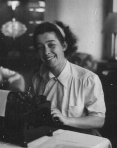
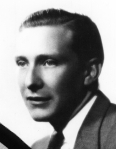
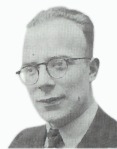

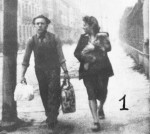
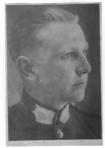

Hello Bruce,
Can I use the pictures of Rene van Muhlem and Dezitter for a booklet on downed airplanes in my region?
Hello Paul,
I have no objection to your using the photos.